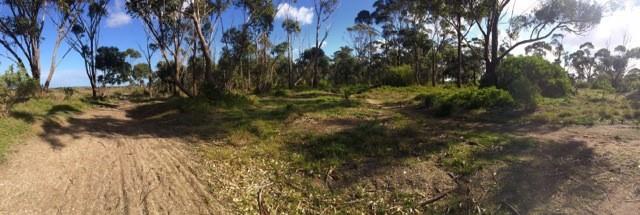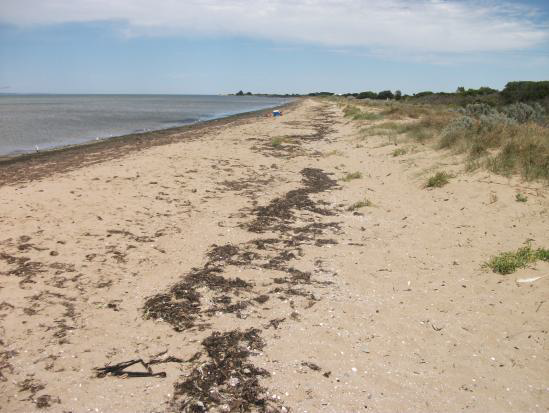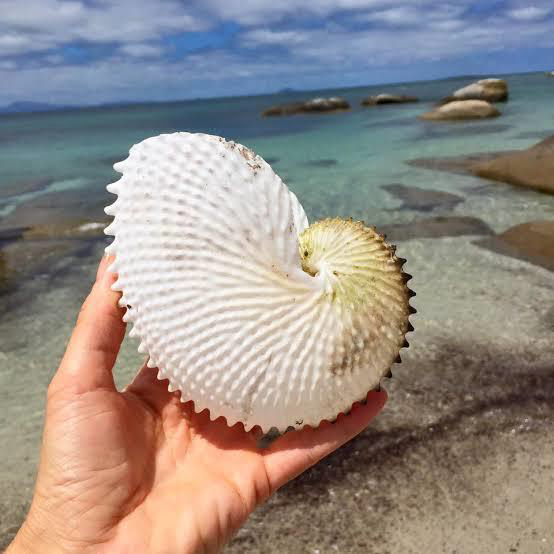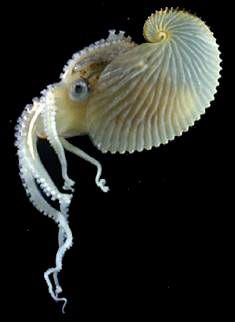One of the great pleasures of living in Sanctuary Lakes is simply walking along our long narrow sandy sea beach, that is a medium strip between Victoria’s largest Marine Sanctuary and the International Ramsar site of Chetham and Point Cook wetlands. These two ongoing marine and wetland conservation programs have, over the last three decades, benefited the unique and varying flora, fauna and marine species that inhabit our neighbourhood. It is one of the last relatively unspoiled reef ecosystems in Port Phillip Bay. Strolling along the marked pathways and beach allows you to be able to observe some rare and surprising species, from the Altona Skipper Butterfly to the intrepid playful Dolphins.
And sometimes something truly strange and yet, altogether magical.

From the Point Cook Homestead Car Park, this sandy lane takes you directly to the Beach
New Year’s Day 2020 was an absolutely perfect day for a wander along the Beach. I took my usual route and drove to the Point Cook Homestead Car Park and strolled through the marked sandy footpath to the Beach. The sun shone with a slight cooling southerly breeze. Ideal for kicking off the sandals and paddling in the receding tide.

The Wetland Beach looking South West
As always in the Marine Park the sea water was crystal clear. Looking down through the shallows, various Sea Shells were peeking out from beneath the sand. The unusual Trochidae and Strombidae shells, mixed with the more common Mussels, Abalone and Cowrie. All of them reflecting fascinating shapes, colours and patterns.
My eye was taken by a large shell lying unburied on top of the sand. Initially I thought it was an unmarked or bleached Nautilus. But surely, we are too far south for a Nautilus. This "shell" had a double keel fringed by two rows of alternating tubercles. The sides were ribbed with the centre either flat and having winged protrusions. But the real difference was the shell’s weight and malleability, it wasn’t made of the hard, tough and brittle aragonite as most other shells are. This was delicate, light, wafer thin, almost translucent and felt papery.
What had I found?

Fortunately, nearby was a family also paddling and beachcombing. Showing them my newly found mystery shell, the father and his son immediately told me it wasn’t a shell but an egg of an unusual Octopus called an Argonaut or Paper Nautilus.
Further research told me that they were partly correct. It was an Octopus’s shell, but it was where the female Argonaut stored its eggs and not its egg’s shell. Even that was not quite right and I soon found I was looking at an amazingly strange marine species that had settled in our close neighbourhood.
This species of octopus is as unusual as it is beautiful. The Argonauts, or Paper Nautiluses, spend their lives drifting near the surface of subtropical seas far from their cephalopod cousins, the squid, octopus, and cuttlefish who mainly live down on the seafloor. Females float by tucking into the fragile, translucent shell that they have created themselves.

The female Paper Nautilus Argonaut attached to her Shell
Like most octopuses, they have a rounded body, with eight tentacled arms and no fins. Female Argonauts are much bigger than males. In fact, about eight times larger and 600 times heavier. The females can grow to a size of 10-15 cm and are iteroparous (can reproduce more than once in a life time). The tiny males barely reach 2 cm in size and only mate once. The male Paper Nautilus has no shell; but he does have a modified arm called a hectocotylus in which his sperm is stored. During fertilisation this is inserted into the female Paper Nautilus, becomes detached within her, and the male subsequently dies. Sadly, the male Paper Nautilus, lives to love, but very briefly.
Evidently scientists, in the past, were puzzled by the presence of this ‘entity’ within the shell of the female. They assumed it was a parasite - we now know that it is all that is left of her male partner.
Without the nooks and crannies of the ocean floor in which to lay her eggs, the female takes matters into its own tentacles - so to speak. Before laying her eggs, the Paper Nautilus uses her enlarged dorsal tentacles to secrete her ‘paper’-thin shell, which can be up to 30 cm in size, and when completed, squeezes herself within it. This shell is produced as a brood chamber for her eggs, and when floating in the open ocean the Paper Nautilus will have her head and tentacles clearly visible, unless disturbed.
The shell also serves another purpose as a ballast tank. which can maintain neutral buoyancy by the air that is trapped within their egg case. The Paper Nautilus rises to the water’s surface, gulps in air, then seals it inside. It then dives down until the trapped bubble counteracts its own weight. It then can bob, without having to expend energy keeping its position in the water column. Paper Nautiluses also can swim quite quickly—faster than a human diver—by using, what can only be described as jet propulsion.
Like other cephalopods, the Paper Nautilus can evade predators by changing its colour to blend in with its background, as well as secreting poisonous black ink when threatened.
Feeding mostly occurs during the day. Paper Nautilus Argonauts use tentacles to grab prey and drag it towards the mouth. It then bites the prey to inject it with venom from the salivary gland. They feed on small crustaceans, molluscs, jellyfish and salp plankton
In late winter and early spring months, the Paper Nautilus Argonauts float closer to the shores of Port Phillip. The two species that occur on our beach are the Knobbed Argonaut (Argonauta Nodosus) and the slightly larger Greater Argonaut (Argonauta Argo)
As I stated at the beginning taking a stroll along our wonderful beach, something truly strange and yet, altogether magical can happen. Paddling in the shallows and meeting the Paper Nautilus Argonaut certainly ticks all those boxes.